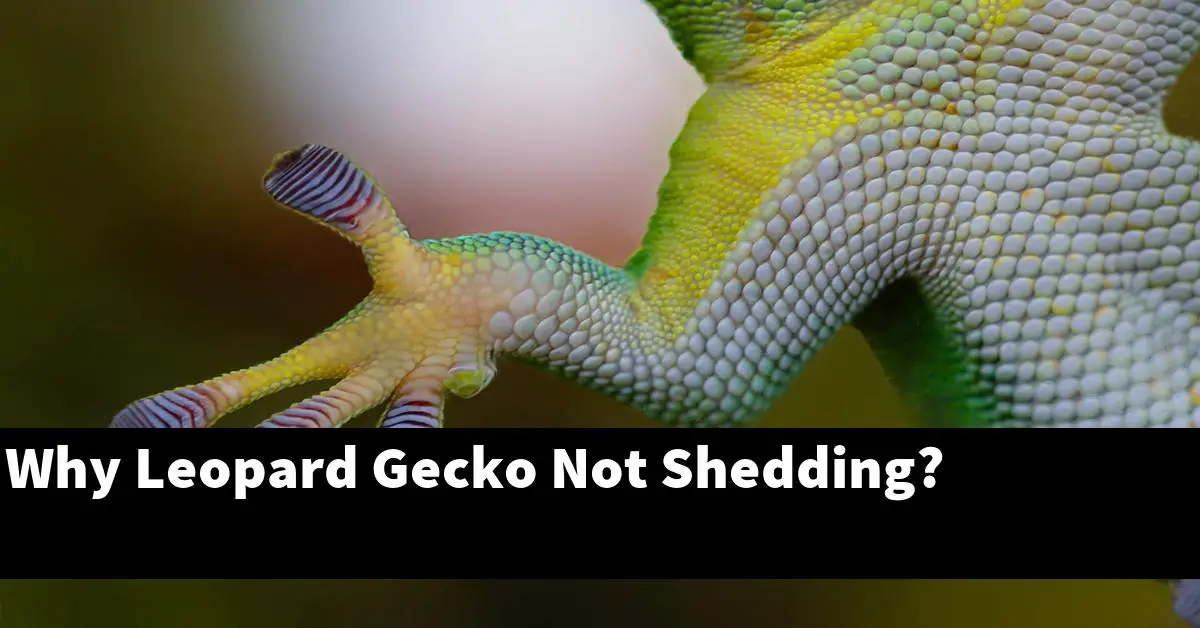If you have a leopard gecko that isn’t shedding, it can be a cause for concern. In this blog post, we’ll explain some of the reasons why leopard geckos might not shed, and what you can do to help them out.
Table of Contents
What to Do If Your Leopard Gecko Won’t Shed?
If your leopard gecko won’t shed, there are a few things you can do to help. First, make sure that the humidity in their enclosure is correct. Too much or too little humidity can make shedding difficult. You can increase the humidity by misting the enclosure or using a humidifier.
You can also try using a shedding aid, such as Repti-Safe shedding aid. This can help to loosen the skin and make shedding easier. Finally, make sure that your leopard gecko has plenty of places to rub its skin. This will help to loosen the skin and make it easier to shed.
Why Leopard Geckos Might Not Shed, and What You Can Do About It?
Leopard geckos are a species of lizard that are known for their ability to shed their skin. However, there are some instances where leopard geckos might not shed their skin. This can be due to a variety of factors, such as stress, dehydration, or a lack of vitamin A.
If your leopard gecko is not shedding their skin, there are a few things you can do to help. First, make sure they are getting enough water. Dehydration can lead to a variety of health problems, including shedding issues. Secondly, try to reduce any stressors in their environment.
This can be anything from a loud noise to a change in temperature. Lastly, make sure they are getting enough vitamin A. This vitamin is essential for proper shedding.
If you have tried all of these things and your leopard gecko still isn’t shedding, you should take them to a vet. They can help determine the underlying cause of the problem and provide you with further treatment options.
How to Help Your Leopard Gecko Shed Its Skin?
One of the most common questions we get here at the leopard gecko care center is “How do I help my leopard gecko shed its skin?” It’s a great question, and one that we are happy to answer!
The first thing you need to know is that shedding is a completely natural process for leopard geckos, and they will usually shed their skin without any help from you. However, there are some cases where your help may be needed. For example, if your leopard gecko is having trouble shedding its skin, or if it is shedding its skin in large pieces.
If you think your leopard gecko needs help shedding its skin, the first thing you should do is increase the humidity in its enclosure. You can do this by misting the enclosure with a water bottle, or by using a humidifier. The increased humidity will help to soften the skin, making it easier for your leopard gecko to shed.
You can also try offering your leopard gecko a warm bath. The warm water will help to soften the skin and make it easier for your leopard gecko to shed. Just be sure to not make the water too hot, as this can be harmful to your leopard gecko. The water should be warm to the touch, but not hot.
If your leopard gecko is still having trouble shedding its skin, you can try gently rubbing its skin with a soft cloth. This can help to loosen the skin and make it easier for your leopard gecko to shed. Just be sure not to rub too hard, as this can damage the skin.
If you have tried all of these things and your leopard gecko still is not shedding its skin, it is best to take it to the vet. The vet can check for any underlying medical conditions that may be causing the problem, and can also give you some tips on how to help your leopard gecko shed its skin.
Summary
There are a few reasons why leopard geckos may not shed properly. One reason could be that the humidity in their enclosure is too low. Another possibility is that the gecko is not getting enough calcium or other vitamins and minerals. If your leopard gecko is not shedding properly, talk to your veterinarian or reptile specialist to find out the cause and how to correct it.

